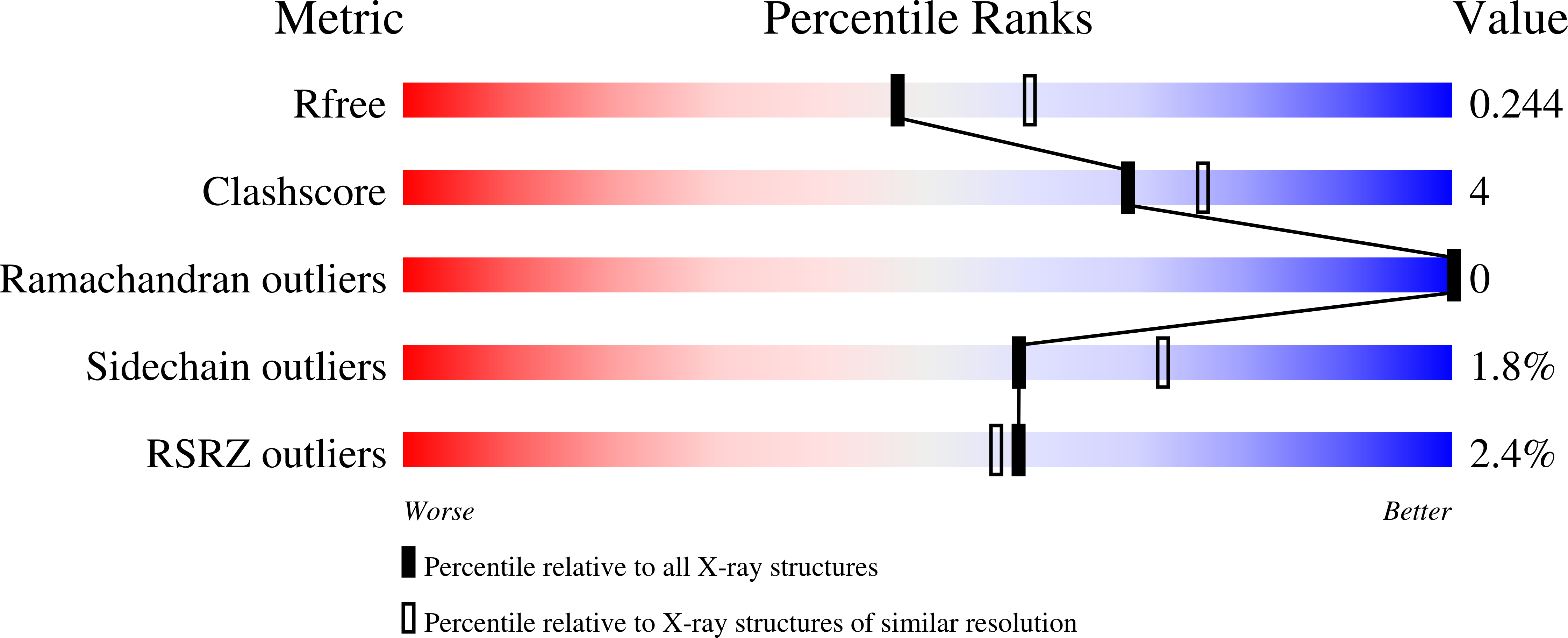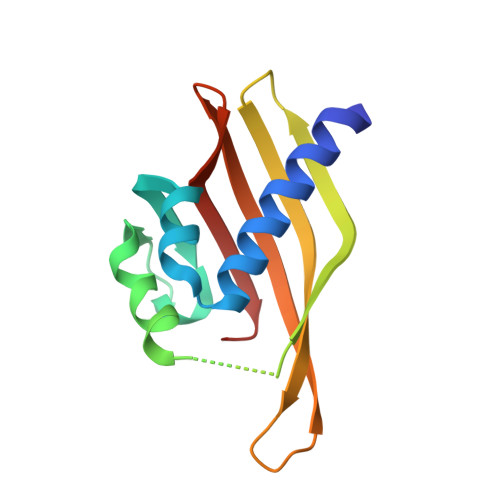GHB analogs confer neuroprotection through specific interaction with the CaMKII alpha hub domain.
Leurs, U., Klein, A.B., McSpadden, E.D., Griem-Krey, N., Solbak, S.M.O., Houlton, J., Villumsen, I.S., Vogensen, S.B., Hamborg, L., Gauger, S.J., Palmelund, L.B., Larsen, A.S.G., Shehata, M.A., Kelstrup, C.D., Olsen, J.V., Bach, A., Burnie, R.O., Kerr, D.S., Gowing, E.K., Teurlings, S.M.W., Chi, C.C., Gee, C.L., Frolund, B., Kornum, B.R., van Woerden, G.M., Clausen, R.P., Kuriyan, J., Clarkson, A.N., Wellendorph, P.(2021) Proc Natl Acad Sci U S A 118
- PubMed: 34330837
- DOI: https://doi.org/10.1073/pnas.2108079118
- Primary Citation of Related Structures:
7REC - PubMed Abstract:
Ca 2+ /calmodulin-dependent protein kinase II alpha subunit (CaMKIIα) is a key neuronal signaling protein and an emerging drug target. The central hub domain regulates the activity of CaMKIIα by organizing the holoenzyme complex into functional oligomers, yet pharmacological modulation of the hub domain has never been demonstrated. Here, using a combination of photoaffinity labeling and chemical proteomics, we show that compounds related to the natural substance γ-hydroxybutyrate (GHB) bind selectively to CaMKIIα. By means of a 2.2-Å x-ray crystal structure of ligand-bound CaMKIIα hub, we reveal the molecular details of the binding site deep within the hub. Furthermore, we show that binding of GHB and related analogs to this site promotes concentration-dependent increases in hub thermal stability believed to alter holoenzyme functionality. Selectively under states of pathological CaMKIIα activation, hub ligands provide a significant and sustained neuroprotection, which is both time and dose dependent. This is demonstrated in neurons exposed to excitotoxicity and in a mouse model of cerebral ischemia with the selective GHB analog, HOCPCA (3-hydroxycyclopent-1-enecarboxylic acid). Together, our results indicate a hitherto unknown mechanism for neuroprotection by a highly specific and unforeseen interaction between the CaMKIIα hub domain and small molecule brain-penetrant GHB analogs. This establishes GHB analogs as powerful tools for investigating CaMKII neuropharmacology in general and as potential therapeutic compounds for cerebral ischemia in particular.
Organizational Affiliation:
Department of Drug Design and Pharmacology, Faculty of Health and Medical Sciences, University of Copenhagen, DK-2100 Copenhagen, Denmark.
















